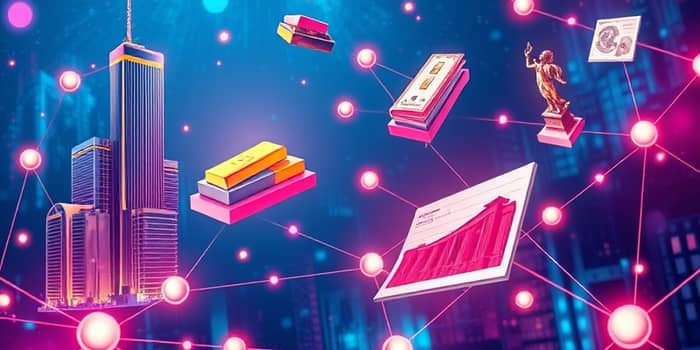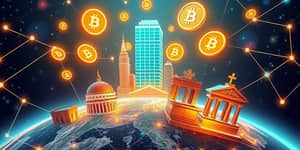
In the rapidly evolving world of decentralized finance, tokenization is unlocking unprecedented opportunities. By bridging the gap between physical assets and blockchain technology, Real-World Assets (RWAs) are redefining ownership, liquidity, and transparency. This article dives deep into how RWAs are reshaping finance, the benefits they bring, and the roadblocks they must overcome.
Real-World Assets refer to any off-chain asset—whether tangible or financial—that is represented on a blockchain through tokenization. This innovative approach converts the value or ownership rights of assets such as real estate, art, commodities, stocks, or bonds into on-chain digital tokens. By doing so, these assets become accessible within decentralized finance (DeFi) ecosystems, unleashing new possibilities for investors and protocols alike.
Types of RWAs:
Tokenization involves creating a digital representation of an asset on a blockchain. First, the asset’s legal or ownership framework is structured through legal agreements. Then, a smart contract issues tokens that correspond to fractional shares or units of that asset. Finally, these tokens are recorded on-chain, ensuring verifiable chain of ownership and enabling seamless transfers.
This process transforms static, often illiquid assets into dynamic digital instruments. Investors can trade fractions of high-value items, unlocking capital that was previously locked away in traditional systems. Moreover, once on-chain, these tokens can integrate with a vast array of DeFi applications, from lending platforms to decentralized exchanges.
Tokenizing real-world assets generates several powerful advantages for users and protocols:
These benefits not only democratize access to traditionally exclusive investments but also enhance the overall efficiency and resilience of the financial ecosystem.
Real-world assets are being adopted across multiple DeFi scenarios, each illustrating unique value propositions:
Each of these applications demonstrates how real-world assets can be seamlessly woven into the fabric of DeFi, enhancing utility and unlocking new revenue streams.
The RWA-focused DeFi sector has seen explosive growth, with total value locked (TVL) reaching approximately $5 billion by the end of 2023. Investment DAOs alone deployed over $5 billion in capital, much of which is directed toward RWA projects.
These figures highlight the rapid adoption and growing confidence in tokenized real-world assets as institutional and retail participants explore new avenues for capital deployment.
Several platforms are leading the charge in RWA tokenization and DeFi integration:
MakerDAO pioneered the use of off-chain collateral to back its DAI stablecoin, establishing a model for risk management and regulatory alignment. Fractional.art enables small investors to own slices of high-value assets, from masterpieces to luxury real estate, through fractionalized NFTs.
Blockchains like Algorand and Sui offer optimized environments for tokenization, with high throughput and built-in compliance features. The XRP Ledger is also building on-chain lending protocols that leverage RWAs, combining pooled liquidity with robust off-chain underwriting processes.
Emerging innovations include:
Despite the promise of RWAs, several hurdles remain:
Legal and regulatory frameworks must evolve to recognize on-chain tokens as enforceable ownership rights. Jurisdictions vary widely in their acceptance of digital asset representations, creating complexity for cross-border projects.
Valuation and auditing require rigorous, transparent processes to maintain trust. If the connection between token and underlying asset is weak, the entire system can become vulnerable to fraud.
Scalability and infrastructure concerns arise when dealing with complex asset classes. Customized rollups or specialized chains may be necessary to handle compliance, reporting, and settlement demands.
Security risks include smart contract vulnerabilities and off-chain enforcement gaps. Robust governance models and insurance mechanisms are essential to protect participants from unforeseen events.
As regulatory clarity improves and infrastructure matures, tokenized real-world assets are poised to revolutionize the financial landscape. Analysts predict that RWA integration will expand the digital asset industry by orders of magnitude as trillions of dollars in off-chain assets migrate on-chain.
This transformation will democratize access to asset classes once reserved for institutions, foster unprecedented liquidity and efficiency, and drive transparency in global finance. By empowering individuals and organizations alike with direct, programmable ownership of tangible value, RWAs are setting the stage for a more inclusive, resilient, and innovative financial system.
Ultimately, the fusion of real-world assets and DeFi marks a pivotal chapter in the evolution of money and value exchange—one that promises to reshape how we invest, trade, and build wealth in the digital age.
References













